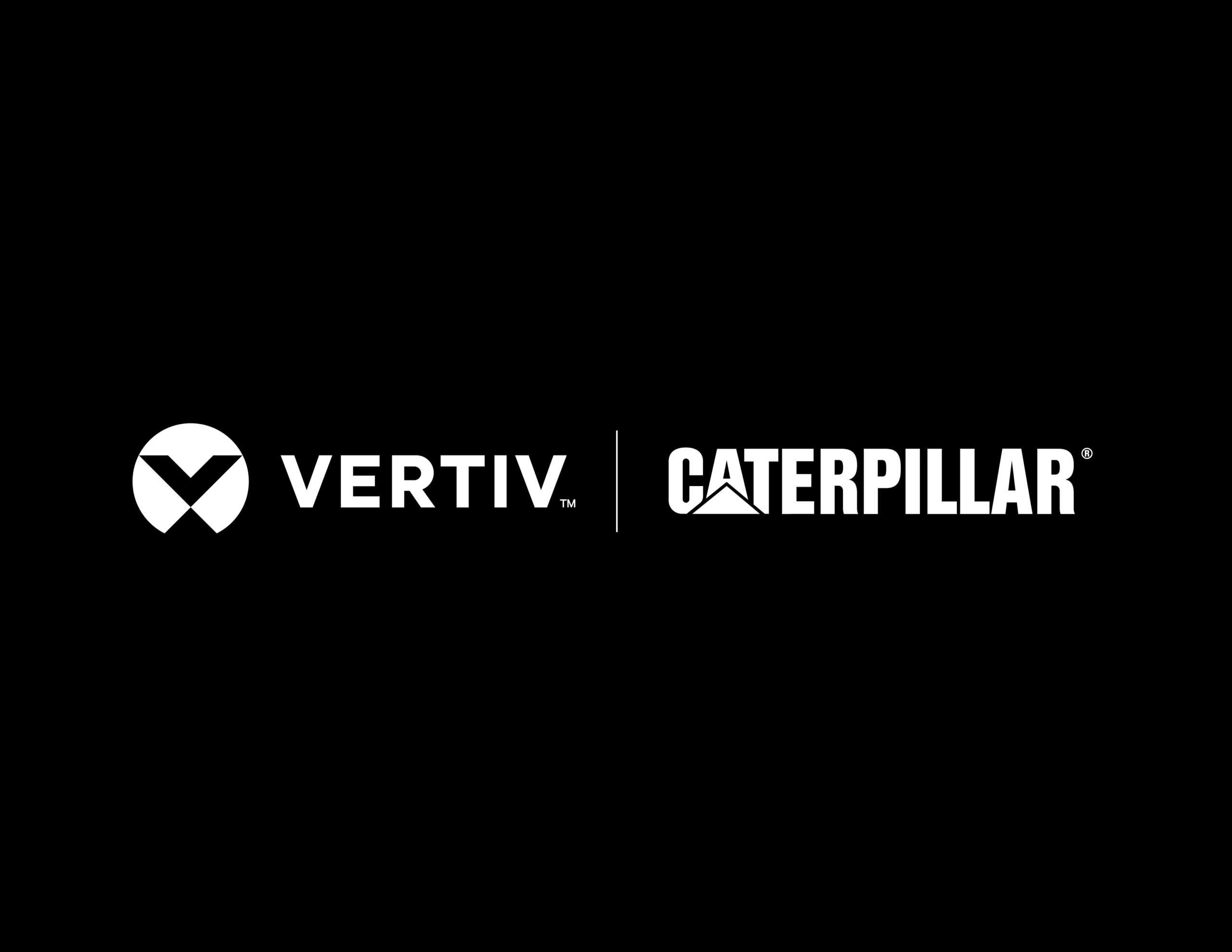Tech News
How Connected Data Ecosystems Are Unlocking New Business Growth

Cloud data ecosystems are the way forward for both industrial enterprises and the technology providers that support them, says Rónán de Hooge, Executive Vice President, Cloud Platform Business, AVEVA. An industrial environment where machines anticipate their own maintenance needs, supply chains innovate in response to real-time demand and resource shifts, and industries operate with unparalleled efficiency and minimal waste—all orchestrated by human experts?
That vision is fast becoming a reality as industries organize in response to the evolving business landscape. Disrupted supply chains, resource scarcity, changing customer needs and increasing regulation are all now commonplace in our integrated, digital-first economy. Success in this challenging environment depends on collaboration. When suppliers, distributors and other chain partners share business information, insights and best practices, they can create combined value that exceeds what each can achieve individually.
Businesses aren’t just connected to each other—they’re interdependent. In industry and elsewhere, the future of business increasingly relies on a connected data ecosystem. Data ecosystems represent the next wave of digital transformation. They leverage a trusted network of technologies to connect people with data from industrial operators and their partners.
With industrial data ecosystems, companies gain access to new capabilities or expertise they may not have in-house. More importantly, a unified view across the value chain, enables companies to discover crucial new insights and leverage broader expertise that enhance their abilities amid a changing business environment. When this industrial intelligence is unified and shared in the cloud, every value chain participant – including partners, regulators and customers – can visualize routes to better efficiency, productivity and sustainability.
Data is the bedrock of growth for the industrial enterprise
Businesses everywhere are now using connected data ecosystems with customers, suppliers, partners and operators. Such integrated networks may even straddle two or more formerly separate sectors. In all cases, they carry value for each player within the ecosystem, including for technology developers.
At the core of this collaboration is data. Industrial organizations now collect data in greater quantities and from a wider variety of sources than ever before. Too often, however, this strategic asset remains siloed at the point of collection because of technology, security and governance barriers, rendering it inaccessible to even internal departments.
Sharing data across an organization—as well as with external partners—gives every player within the ecosystem a contextual understanding of how to optimize their role in the value chain. Industrial organizations are therefore catalyzing digital transformation to create seamless collaboration across the lifecycle and unlock greater value and sustainability gains for all stakeholders.
Around the world, many players are already leveraging these platform services to drive positive outcomes on several fronts:
- Drive efficiency through collaboration: Sharing data from a single source of truth empowers experts—regardless of location or technical background—to make better decisions faster.
- Achieve environmental, social and governance (ESG) targets: Viewing unified value chain data in context helps surface the interdependent areas where sustainability action can have the greatest impact, such as greater circularity, improved efficiency, reduced emissions and better regulatory compliance.
- Enhance individual and joint innovation: The competitive advantages gained from secure data-sharing communities strengthen trusted supplier and partner relationships. By adding context to real-time data, companies can expedite R&D, innovate together and mutually enhance competitive advantages.
- Improve decision-making: Seamlessly connecting diverse data sources and extensible applications within an ecosystem gives businesses richer and more complete insights that can reduce operational costs and improve revenue outcomes.
- Transform business for faster revenue: An industrial data ecosystem delivers value within hours instead of days or weeks. Accordingly, companies can achieve faster adoption, expand their market reach, and leverage economies of scale—all while reducing costs through lower software investments upfront and lower ongoing IT and maintenance expenses.

How ecosystem building works for technology companies
As industries begin strategizing for the outcomes enumerated above, data ecosystems are helping them meet their needs. This kind of ecosystem thinking also supports innovation for technology providers and developer partners.
Such digital platforms bring together a multitude of complementary solutions and applications that can be tailored to specific business needs. At their core, such an industry data community is a network of interconnected software applications, services, and platforms that integrate seamlessly to enhance process efficiencies while uncovering new value for end customers.
With an open and neutral platform, partners can expedite the development of emerging technologies and services, driving agility and value for customers. The ability to securely share specific data streams within a standardized format and with granular control supports the development of new applications and value-added services – without compromising intellectual property.
This adaptability is a game-changer at a time of increasing cross-domain innovation, when developments in one field, such as artificial intelligence, can support progress in another area. Connected data ecosystems provide the advantages developers need in an ever-evolving industrial landscape.
Industry appetite and the flywheel effect
Different industrial sectors have either already added to, or are accelerating, their investment in connected data ecosystems. The vast majority (90%) of respondents in IDC’s 2023 Future of Industry Ecosystems global survey said they plan to maintain or accelerate their investment into such data ecosystems this year and next. Principal motivations included increasing business agility, better process automation, improved systems integration, and increased data-sharing with partners, including for ESG reasons.
The survey interviewed 1,288 C-suite and business line executives decisionmakers across energy, construction, process manufacturing, government and other industries around the world. Overall, the appeal of the connected data ecosystem could lie in its ability to accelerate the flywheel effect, a concept familiar to engineers.
With the flywheel effect, small wins accumulate over time to create a momentum that keeps the business growing. Likewise, within the kind of integrated data community described here, every player can expect to be able to recalibrate for resilience in real-time, driving incremental gains for all stakeholders on a continuous basis.
Whether for industrial enterprises, technology companies or developers, the whole truly then becomes worth more than the sum of its parts. The value of connected data ecosystems—and the potential exponential growth they promise—will be the foundation of our sustainable future.
Tech News
ATERMES and IEC secure Landmark Contract to Deploy AI-Powered Bird Repelling System at Lahore Airport

ATERMES, a French leader in advanced surveillance and security solutions, announces in partnership with The Imperial Electric Company (IEC), the award of a major contract by the Pakistan Airports Authority (PAA) for the deployment of a state-of-the-art Bird Repelling System (BRS) at Lahore International Airport.
This milestone project represents a first-of-its-kind integrated solution combining SURICATE, ATERMES’ advanced AI-enabled multi-sensor surveillance system, with acoustic and laser deterrence technologies. The system delivers a fully automated, intelligent, and environmentally friendly approach to mitigating bird-strike risks; one of aviation’s most persistent safety challenges.
The SURICATE system, developed by ATERMES in France, brings together cutting-edge optronics, embedded AI, and edge computing to continuously monitor airfields, identify potential avian threats in real time, and automatically activate deterrence mechanisms.
Once a bird threat is detected by the system’s deep-learning algorithms, SURICATE autonomously triggers the surrounding acoustic and laser repellers, driving the birds away from critical flight zones such as runways and taxiways.
This unique synergy between AI-based detection and automated multi-modal deterrence marks a turning point in airport security and environmental protection. Unlike traditional manual or time-based repelling systems, the BRS for Lahore Airport operates only when necessary, optimizing energy use and minimizing disturbance to the surrounding ecosystem.
Lionel Thomas, Chairman of ATERMES, stated: “This project is not just about technology; it’s about redefining how airports ensure safety through intelligence. By merging AI, optics, and deterrence, we’re transforming bird control into a predictive, autonomous, and eco-responsible process.”
Sajid Jamal, Executive Director of The Imperial Electric Company, added: “Our partnership with ATERMES reflects Pakistan’s growing commitment to embracing advanced, AI-driven safety systems. Lahore will become the first airport in the region equipped with such an integrated and intelligent Bird Repelling System.”
The project underscores a strong collaboration between France and Pakistan in technological innovation. ATERMES will provide the detection and control systems, while IEC, a key player in Pakistan’s engineering and infrastructure sectors, will oversee integration, installation, and local support. Together, they will ensure the delivery of a robust, scalable, and sustainable system that sets a benchmark for other international airports in the region.
Tech News
Ramco Systems Celebrates 20 Years in the Middle East, Unveils Vision for the Future at Milestone Event

Doubles down on AI-native applications and localized innovation to shape enterprise technology in the region
Ramco Systems, aglobal enterprise software company offering next-generation SaaS-enabled platforms and products, celebrated two decades of powering enterprise transformation in the Middle East. To mark this milestone, Ramco hosted Ramco@20 – Experience That Matters, a full-day event in Dubai designed to showcase its regional journey, highlight cutting-edge innovations, and bring customers and industry leaders together for forward-looking discussions.
The first half of Ramco@20 convened senior HR and payroll leaders from across the region for a thought leadership forum on the future of employee experience. Industry leaders discussed how enterprises in the Middle East are moving beyond traditional HR process optimization toward more intelligent, intuitive, and employee-centric models of workforce management. Conversations explored balancing automation with empathy, using AI thoughtfully, and elevating payroll as a trust-building touchpoint.
The second half welcomed a large gathering of customers across business units – Global Payroll, Aviation MRO, ERP, Services Resource Planning and Logistics – along with partners, and industry influencers, for a celebration honouring the relationships that have defined Ramco’s two-decade journey. Ramco’s leadership unveiled its technology vision: shifting from Systems of Record to Systems of Intelligence through AI-native applications, agentic workflows, and conversational UX. The leadership’s address also emphasized its investments in platform modernization and localized initiatives, while outlining a roadmap to further strengthen Ramco’s focus for the next 20 years.
Abinav Raja, Managing Director, Ramco Systems, said, “The Middle East has been a cornerstone of Ramco’s growth story for two decades and has shaped our thinking in profound ways. The region’s appetite for transformation has inspired us to design solutions that combine global best practices with local relevance. This milestone is built on the trust and partnership of our customers, and our commitment is clear: double down on AI-native, API-first applications that incorporate special features aligned with the region, platform modernization, and customer-centricity. We are shaping the future of enterprise technology with solutions enabling businesses to focus on what truly matters: growth and people.”
Sandesh Bilagi, Chief Operating Officer, Ramco Systems, said, “Our presence in the Middle East has been built on strong partnerships and a commitment to delivering outcomes. This region is not merely a market for us, but also a proving ground for ideas that redefine global enterprise technology. The presence of all our business units in this region makes the Middle East a key pillar and reflects the confidence our customers have placed in us for twenty years.“
“Our investments in agentic AI, conversational UX, and platform innovation are designed to deliver enterprise applications that are intuitive, secure, scalable and integrate regional nuances,” Bilagi added. “We also focus on customer-focused initiatives like local deployment and training because every digital journey is, at its core, a human journey. The region is setting global benchmarks, and we are proud partners of the next era of enterprise innovation.”
Over the past two decades, Ramco has partnered with leading enterprises across the region, enabling digital transformation through innovative solutions. Its work in the Middle East has been shaped by sectors and functions that demand precision at scale – payroll, aviation, manufacturing, conglomerates, trading, infrastructure, professional services and logistics – giving Ramco an execution depth that continues to define its competitiveness in the region.
Tech News
Vertiv and Caterpillar announce Energy Optimization Collaboration to Expand End-to-End Power and Cooling Offerings for AI Data Centers

Vertiv, a global leader in critical digital infrastructure, and Caterpillar Inc. (NYSE: CAT), a global leader in power systems, today announced the signing of a strategic undertaking to collaborate on advanced energy optimization solutions for data centers. This initiative will integrate Vertiv’s power distribution and cooling portfolio with Caterpillar’s, and its subsidiary Solar Turbines’, product and expertise in power generation and CCHP (Combined Cooling, Heat and Power) to deliver pre-designed architectures that simplify deployment, accelerate time-to-power and optimize performance for data center operations.
A Powerful Collaboration:
This collaboration directly addresses the growing demand for on-site energy solutions that deliver reliable power and cooling. Together, the companies are able to offer a fully integrated solution with validated interfaces and performance, enabling customers to accelerate design, installation and deployment.
- Caterpillar and Solar Turbines will supply power generation solutions, such as natural gas turbines and reciprocating engines, to deliver dependable, scalable electric power and thermal energy for CCHP.
- Vertiv will provide a complete portfolio of power and cooling solutions and services, packaged as modular, pre-designed blocks, to shorten design cycles and standardize deployment.
The Customer Advantages:
- Accelerates Time-to-Power – by utilizing predesigned, modular reference architectures to speed up deployment time.
- Lowers PUE (Power Usage Effectiveness) – enables improved energy efficiency and carbon footprint because the system is optimized end-to-end: power, cooling, distribution and dynamic load management, compared to traditional design.
- Global lifecycle support – the offering is backed by the trusted, global service and support networks of both Vertiv and Caterpillar.
“This collaboration with Caterpillar and Solar Turbines is a cornerstone of our Bring Your Own Power & Cooling (BYOP&C) strategy and aligns seamlessly with our grid-to-chip framework by offering resilient, on-site power generation solutions. This is optimal for customers looking to reduce or eliminate grid dependence,” said Gio Albertazzi, CEO, at Vertiv. “By combining our complementary technologies, portfolios and expertise, we are enabling coordinated integration. Our pre-engineered, interoperability-tested building blocks let customers execute design, build and deploy concurrently, with predictable system performance.”
“As AI-driven workloads continue to accelerate, the demand for robust and scalable power infrastructure and cooling is becoming increasingly critical,” said Jason Kaiser, group president of Caterpillar Power & Energy. “Our collaboration with Vertiv will enable us to deliver integrated, on-site energy solutions that lower PUE and meet customers’ evolving needs.”
This initiative directly addresses the growing demand for on-site energy solutions and offers a coordinated, customer-first approach to solution design and implementation. The Vertiv and Caterpillar Memorandum of Understanding (MOU) represents a pivotal step in further refining this ecosystem, enabling customers to overcome energy constraints and deploy optimized AI centers.
-

 Tech News1 year ago
Tech News1 year agoDenodo Bolsters Executive Team by Hiring Christophe Culine as its Chief Revenue Officer
-

 VAR8 months ago
VAR8 months agoMicrosoft Launches New Surface Copilot+ PCs for Business
-

 Tech Interviews2 years ago
Tech Interviews2 years agoNavigating the Cybersecurity Landscape in Hybrid Work Environments
-

 Tech News5 months ago
Tech News5 months agoNothing Launches flagship Nothing Phone (3) and Headphone (1) in theme with the Iconic Museum of the Future in Dubai
-

 Tech News2 years ago
Tech News2 years agoBrighton College Abu Dhabi and Brighton College Al Ain Donate 954 IT Devices in Support of ‘Donate Your Own Device’ Campaign
-

 Editorial1 year ago
Editorial1 year agoCelebrating UAE National Day: A Legacy of Leadership and Technological Innovation
-

 VAR1 year ago
VAR1 year agoSamsung Galaxy Z Fold6 vs Google Pixel 9 Pro Fold: Clash Of The Folding Phenoms
-

 Cover Story9 months ago
Cover Story9 months agoUnifonic Leading the Future of AI-Driven Customer Engagement

























